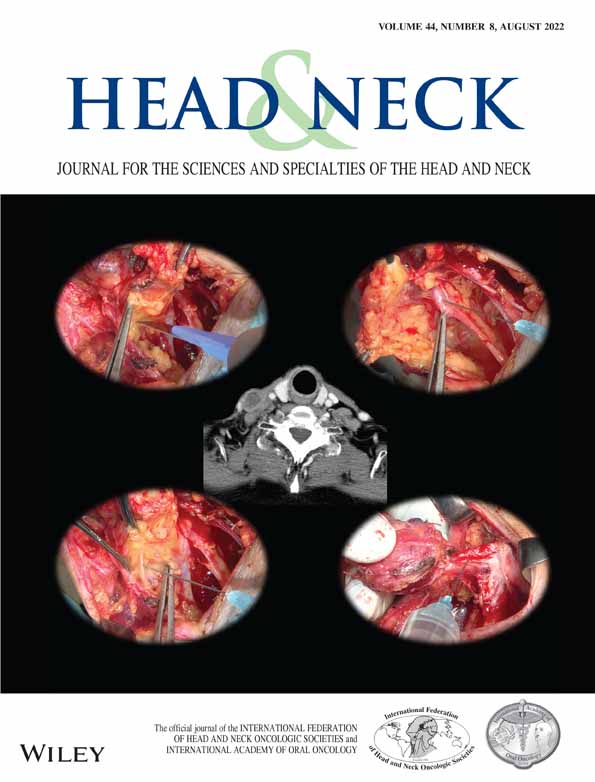Pharyngeal tongue base augmentation for dysphagia therapy: A prospective case series in patients post head and neck cancer treatment
The preliminary data from this study was presented at the Australian and New Zealand Head and Neck Cancer Conference Meeting in 2019.
Funding information: Australian and New Zealand Head and Neck Cancer Society Foundation
Abstract
Background
Dysphagia post head and neck cancer (HNC) multimodality treatment is attributed to reduced pharyngeal strength. We hypothesized that pharyngeal tongue base augmentation for dysphagia (PAD therapy) would increase pharyngeal pressures during swallowing thereby improving swallow symptoms.
Methods
Adults with moderate–severe dysphagia post-HNC treatment had PAD therapy using a temporary filler (hyaluronic acid [HA]), with follow-up long-lasting lipofilling. Swallowing preprocedure and postprocedure was assessed with the Sydney Swallow Questionnaire (SSQ), High-Resolution Pharyngeal Manometry (HRPM), and Videofluoroscopic Swallowing Study (VFSS). Statistical comparison utilized paired tests.
Results
Six participants (all male; median age 64 years [IQR 56, 71]) underwent PAD therapy at a median of 47 [IQR 8, 95] months post-treatment. SSQ scores reduced from baseline (mean 1069 [95%CI 703, 1434]) to post-HA (mean 579 [76, 1081], p > 0.05), and post-lipofilling (491 [95%CI 913, 789], p = 0.003, n = 4). Individual participants demonstrated reduced Swallow Risk Index, Bolus Presence Time, and increased Upper Esophageal Sphincter opening, but mesopharyngeal contractile pressures were unchanged. VFSS measures of aspiration, residue, and severity were unchanged.
Conclusions
Novel PAD therapy is safe and improves dysphagia symptoms. Biomechanical swallowing changes are suggestive of more efficacious bolus propulsion with conservative filler volume, but this was unable to resolve residue or aspiration measures.
CONFLICT OF INTEREST
The development of the swallowgateway.com website was supported by grants from the College of Medicine and Public Health, Flinders University. Taher I. Omari holds inventorship of the patent family that covers the analytical methods described. The Swallow Gateway web application is owned by Flinders University. Taher I. Omari is supported by National Health & Medical Research Council (NHMRC) of Australia Senior Research Fellowships. The authors have no other funding, financial relationships, or conflicts of interest to disclose.
Open Research
DATA AVAILABILITY STATEMENT
Data are available on request due to privacy/ethical restrictions.




